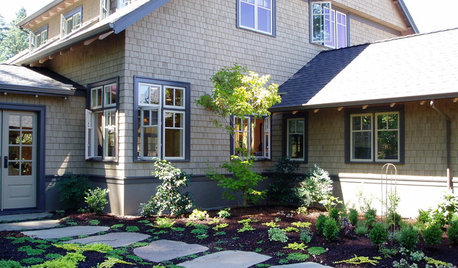XPS...Owens Corning...clueless??
matt_r
16 years ago
Related Stories

WINDOWSShould My Window Trim Match — or Contrast With — the Sash?
The short answer: It depends
Full StoryMore Discussions
Called Owens to find who sells the Insulpink. While on the phone with their supposed "technical" experts, I got several conflicting answers. First they said I could not build my wall out from the panels...I wanted to glue the panels to the wall, then frame with 2X4's or 2X3's to be able to install wires, speaker wires, etc. I did not want to imbed them into the 1-1/2 foam panel. I am not happy with the amount of room that leaves me. There are just too many things that need to go into this wall. They said, I must install the sheetrock directly onto the surface of the foam panel using the firring cut outs they have.
And when I asked about installing extra unfaced insulation in the framed wall, they said they could not provide direction on that...????


worthy
Brewbeer
Related Professionals
Athens General Contractors · Banning General Contractors · Jamestown General Contractors · Martinsville General Contractors · Phenix City General Contractors · Seguin General Contractors · Signal Hill General Contractors · Walker General Contractors · Wallington General Contractors · Middle Island Interior Designers & Decorators · Tahoe City Interior Designers & Decorators · Auburn Hills Architects & Building Designers · Long Beach Flooring Contractors · Pflugerville Flooring Contractors · Virginia Beach Flooring Contractorslewisnc100
bosun2
mowers
worthy
marys1000
worthy
chris8796
lewisnc100
mowers
chris8796